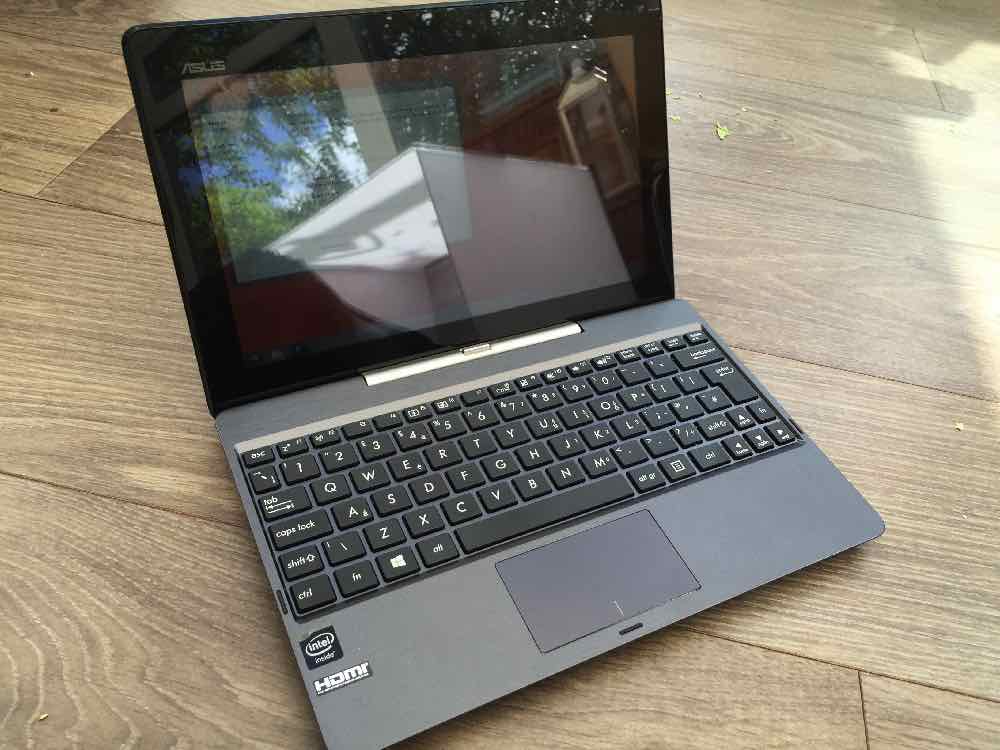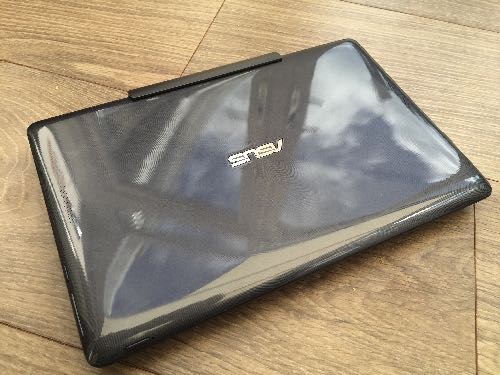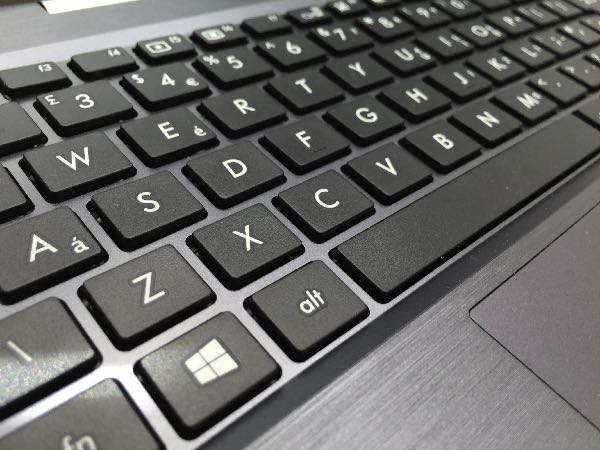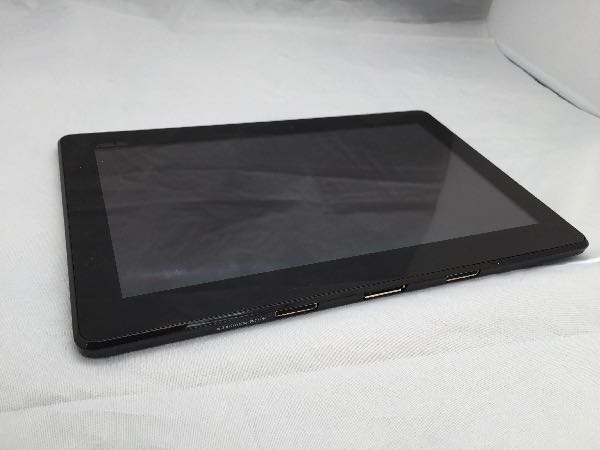As a Mac user, I am used to thin and light devices with long battery life. I'm also used to great performance on both my Macs and my iOS devices as well as incredibly intutive operating system features. This is why in 2012 I stopped using Windows-based computer systems altogether.
I got myself a new netbook in April 2013 with the intention of being able to install a nice Linux distribution on to it, but unfortunately this was not possible due to driver issues. As a result I was stuck with a netbook that was impossible to use due to running on Windows 7 and ran incredibly slow all the time.
I came up with the Asus TF100TAF convertible tablet-netbook combination. I did not get this for any reason other than as a replacement of my netbook, it was not designed to replace my MacBook Pro or my iPad as they are already a lethal combination.
In this review, I am looking at the Asus Transformer Book TF100TAF for what is good and what is not so good and what I'd like to have seen in it.
Asus
Asus are one of the better PC manufacturers out there in my personal experience - in the 2009 list of the best PC manufacturers Asus came out number one for reliability (I like to bring this survey up often):
- Asus: 15.6%
- Toshiba: 15.7%
- Sony: 16.8%
- Apple: 17.4%
- Dell: 18.3%
- Lenovo: 21.5%
- Acer: 23.3%
- Gateway: 23.5%
- HP: 25.6%
The survey was conducted by SquareTrade in 2009 to assess which computer manufacturers were most reliable. A higher number represents the failure rate of the company's products. As you can see, and one thing I bring up a lot, is that HP came up with a quarter of their systems failing in three years (for me, three systems failed within three years out of a total of three systems, therefore making this number actually 100% for me!). Asus on the other hand came out as the most reliable, even above Apple, with a failure rate of just 16%.
Design
The Asus Transformer Book TF100TAF convertible tablet-netbook combination design is almost exactly the same as my Asus EeePC 1015CX netbook, apart from the very subtle differences like the silver display hinge, the thinner base and the glass on the screen.
The Transformer itself is made of plastic although it feels well built. The detachable display uses a glass front, similar to most tablet computers, including the iPad, and it looks nice from the inside and the outside. Although the keyboard dock looks to be made of brushed aluminium, it most certainly is not, and along with the majority of the Transformer, it is built just with plastic.
In all fairness, the plastic of the Transformer is really sturdy feeling and it feels well built in general.
I have in the past commented on how good Asus' manufacturing is and that the quality of their products is of an excellent standard and the Asus Transformer TF100TAF is no exception to this. In fact, I would go as far as to say this is one of the best-built PCs at this price point I have ever seen.
As a netbook, it looks very similar to my previous (very underused) netbook, the Asus 1015CX, which I bought in 2013.
One notable thing about the tablet is that it is very prone (front and back) to fingerprints. Another criticism of this tablet/netbook combination is the quality of the keyboard. The keyboard is not a very comfortable.
Below are some images of the tablet/netbook combination.
Working together
This computer system could be seen as another netbook, I mean in terms of size it certainly fits that criteria. It also has an Intel Atom which many will remember as being the cornerstone of the netbook's motivation, structure and success.
The keyboard is fully attached when docked. It does not use some Bluetooth case thing (unlike the iPad, which doesn't need a keyboard in my opinion).
But things have changed. The tablet and the laptop have decided to work together in the Windows world, and whilst I personally like this idea, I don't think Microsoft and their cronies have managed to get it right. Windows 8 and Windows 8.1 (collectively known as Windows 8.x in my articles) have managed, rather nicely, to make Windows compatible with devices such as small tablets (and Windows 10 will replace Windows Phone 8.1 on Windows Phones, giving them access to the real Windows operating system). They have not however made it user-friendly.
The whole of Windows 8.x has had barely any thought on what makes other tablets user friendly. I still prefer to use my old desktop applications with a mouse and keyboard - that will never change, but the whole concept of bring the Metro to look to both desktop and tablet users seems flawed to the core.
Windows 8.1 does, however, work reasonably well with this system in tablet mode - even with its high resolution, touch, even on the desktop feels reasonably good.
Features
The Transformer is a convertible tablet in that the screen is able to be disconnected from the keyboard. I am personally not a fan of these designs, but the Transformer, being small, makes this work quite well.
In certain models, my own included, the keyboard dock also adds a 500GB replaceable hard disk drive. The price difference for me was just £50, so I was prepared to pay the difference to get more storage and in the case that model without the drive did not keyboard did not feature the SATA connector to connect up the drive (I still do not know if it does).
One feature they should perhaps have added to the keyboard dock is a battery which could make up for the extra power used when docked and also give the tablet a nice boost.
The keyboard dock trackpad features multi-touch and a left and right-click button. Whilst it is nice that it features proper buttons that are visible, they are sometimes slightly difficult to use to click and the multi-touch features are difficult to utilise on the small trackpad. Another issue is that trackpad goes unresponsive when it has not been used for a few seconds and flies across the screen when reactivated.
The keyboard itself is decent, it has a reasonably nice feel to it and whilst it is small and not for everyone, I managed to touch type this entire sentence with absolutely no mistakes at all. I achieve around 70 words per minute using the keyboard (on my MacBook Pro I achieve about 92 words per minute). The keyboard is also an island or chiclet keyboard so there is room between each key which makes it harder to make mistakes.
The system also features a MicroSD card slot on the tablet, but because of the way Windows will see this drive, it cannot be fully used as a storage device (as far as I know).
Specifications
The Asus Transformer TF100TAF has decent specifications for the price (I will not try and point you to a Mac with a similar bang-for-buck).
The Transformer runs Windows 8.1 out of the box, but I'm sure it is possible to install Android on to it (and maybe some Linux distributions). I say this because at the time of the release of this tablet there were also Android Transformer tablets available.
Featuring an Intel Atom Z3735F which, although does not feature Hyper-Threading, does offer the Asus Transformer a low power quad-core processor that is powerful enough to run most applications very well. This quad-core processor features 2MB of cache memory and a 1.33GHz clock frequency with a burst frequency of 1.83GHz. It is located within the system at the bottom right of the display and if it is worked, you will notice the tablet get slightly warmer at that position. For the majority of the time, however, the system remains cool and quiet (it is also fanless).
The system also features a reasonable 2 gigabytes of memory, making for a decent all-round specification that makes running Windows 8.x no problem at all. It also means that the system runs absolutely fine when running several applications at once.
The tablet features a built-in solid-state drive which has up to 64GB of storage, although it is difficult to get the 64GB of storage and the 500GB drive in the dock. I ended up compromising the built-in storage and going for the 32GB model so that I could get the 500GB hard drive (in case it was not possible to add a hard drive to the keyboard dock of the standard 64GB model).
Unfortunately, the 32GB is far too small to store anything on, so I have had to put all of my documents, photos and so on straight onto the MicroSD card that I have bought for it.
In fact, with an iPad, 32GB is sufficient, but because of Windows 8 and all of the hoarded old libraries and DLLs that Windows lugs around with it, there is probably just less than 3GB of free space on the device. Compare this to an iPad which gets around 27GB of free space in the 32GB model.
The system features an IPS (in-plane switching) display, which has a maximum resolution of 1366 pixels by 768 pixels - slightly higher than an iPad but lower than an iPad Air.
As a whole, the system performs very well. I have heard reports that it can run Crysis at 27 frames per second and whilst this is not intended to be a benchmark, it is simply a testament to how performance has improved over the years and that this system is capable of running a game from several years ago at a decent frame rate. I personally tried out my all-time favourite game - Warcraft III - which ran absolutely fine and was perfectly playable. In general, these should only be taken as contextual data rather than proper benchmarks as this system was not designed as a gaming system.
Connectivity
The tablet features a Micro USB connector which is used to charge the device and can be used with USB On The Go adapters to convert it to a standard USB 2.0 port. This means that external hard disk drives, USB flash drives, printers and so on can be connected to the Micro USB connector.
As well featuring Micro USB, the tablet supports Micro HDMI which means it can connect to an external display supporting either DVI or HDMI. Micro HDMI is one of these connectors that has no dual-ended cables (i.e. all devices feature a full HDMI at the end and never feature another Micro HDMI version) so it needs to be converted to full HDMI using an adapter. Micro HDMI supports full 1080P resolution over a single cable.
There is an alternative to HDMI called DisplayPort which I would really have liked to have seen featured on this tablet, although Mini DisplayPort only seems to feature on high-end laptops and tablets, despite being much cheaper to implement than HDMI.
I'd also have really liked to have seen a full USB port on the tablet.
One thing that the Transformer TF100TAF adds when the keyboard is attached is a USB 3.0 port - miles faster than the Micro USB 2.0 port. This addition means that no adapters are required to connect a USB hard disk drive, a USB flash drive, a printer or any other standard USB peripheral. USB 3.0 is also backwards compatible, so USB 2.0 devices can be used with this connection with no modifications or adapters necessary.
I feel like things are still missing from the keyboard dock - such as perhaps adding a full HDMI or adding 2 USB 3.0 ports to the tablet rather than the single connector. A card reader for SD would have been really nice too.
The one-third thing missing from the tablet is UMTS and/or LTE. Most tablets these days feature an option at least to include a mobile phone network data connection and a SIM card and a data connection would have been a nice addition (as a matter of fact, I am typing this up on the Transformer using my iPhone's data connection).
As a tablet
The tablet portion of this computer is definitely not an iPad, but it works well.
From Windows 8's touch features to the way the whole tablet responds and performs, the Asus TF100TAF works well. The performance on the system is up to standard with a modern-day system of its size, and the Intel Atom really does offer real bang-for-buck.
In terms of weight, the tablet only weighs around 550 grams, making it an incredibly light and compact system that can be carried about.
As mentioned earlier, the tablet features an IPS display which makes it easier to read at different angles. Windows 8.1 also copes well with rotation and the display automatically rotates when the tablet. When the tablet is docked it disables this auto-rotate feature.
Compared with my iPad Air (2014), the system is not as user friendly, less convenient for web browsing and the display is not as high quality. Therefore, for the majority of tasks, I would not recommend it as a tablet (I use my own one as my netbook, designed to replace my Asus 1015CX).
Conclusion
This tablet-convertible laptop netbook device is one of the best of it's kind. I am personally amazed at how well it runs Windows 8.x considering its size. Computers have come along way in my lifetime.
The Asus Transformer TF100TAF is one of those 'stand out in a crowd' devices (it's not a Mac, however) that really shows off it's potential to be a great little performer - it looks smart, it runs all of those Windows applications, but unfortunately is let down by a few minor things.
The first of those is the battery life. Asus claim the battery life to be 11 hours. In my test I got just over 7 hours of web browsing. This could easily have been rectified by adding a battery to the fantastic keyboard dock.
Another thing that is totally missing from the system is the addition of an SD card reader on the keyboard dock. This really would have been a nice feature, although I don't think that is all that is missing from the dock, perhaps two USB 3.0 ports would have been sufficient and maybe a full-size HDMI.
In general, I am really impressed with this Windows 8 convertible tablet, but I feel that there was a lack of consideration around the keyboard dock.
- Great, solid feeling design
- Good performance
- Micro SD slot
- Hard drive available in the keyboard dock
- USB 3.0
- Micro HDMI connector
- Runs on a full desktop version of Windows 8.1
- Bang-for-buck - you get a lot of great things cheaply
- Lightweight
- Battery life is not as good as expected
- Keyboard dock is not fully utilised, it could have had more done with it, like adding a battery, a card reader, full HDMI or more than one USB 3.0 port.
- The tablet itself could have featured more physical connections
- Lack of SD card slot for reading photos from cameras
- No SIM options available
- The keyboard is not the most comfortable











